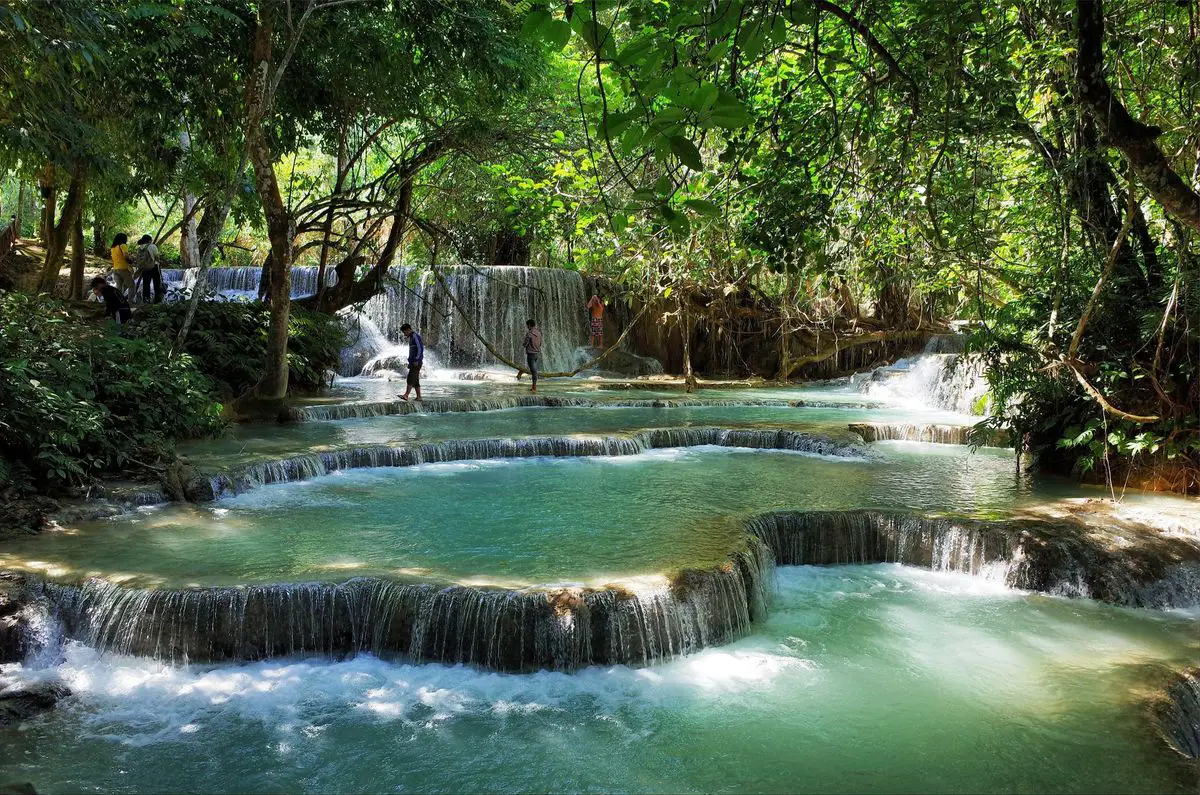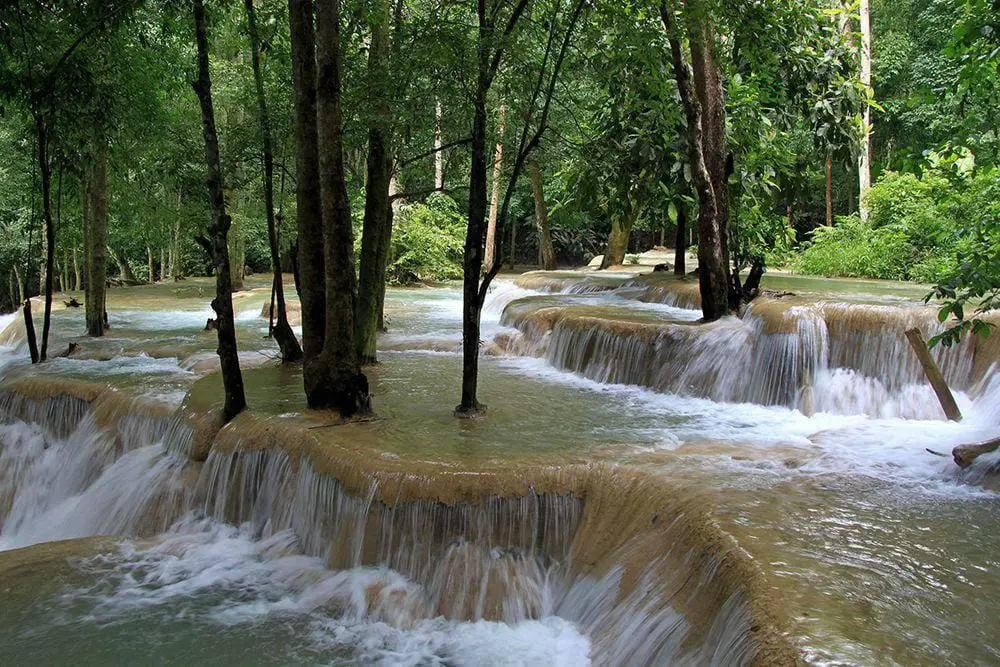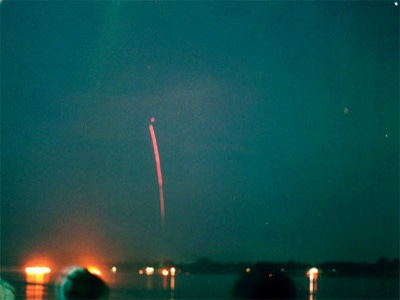Wondermondo 🢖 World 🢖 Wonders of Asia 🢖 Wonders of Laos
Territory
Wonders of Laos
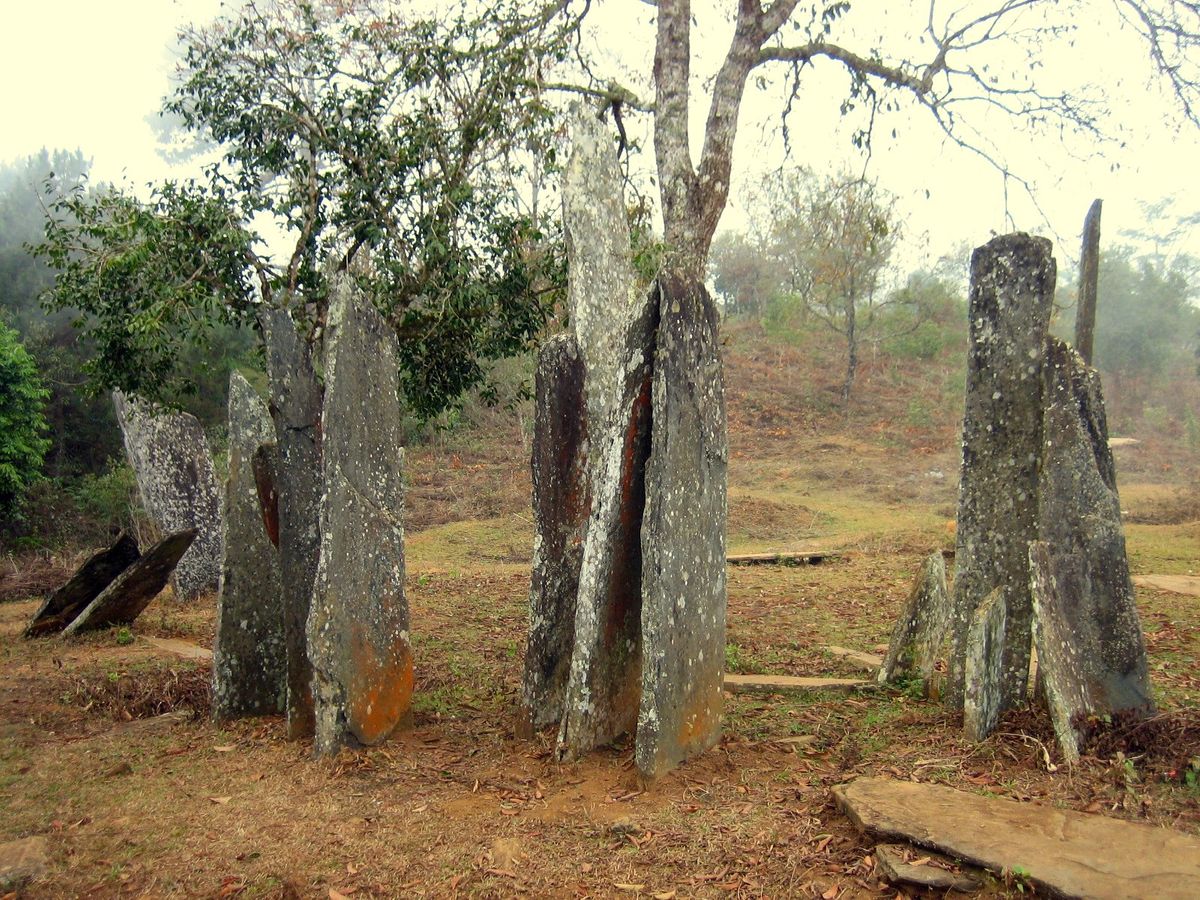
 Highlights
Highlights
Only recently, Laos is emerging on the stage of international tourism – this beautiful country for decades was dragged in terrible wars and post-war isolation period.
Contrary to most countries of the world, Laos still is largely covered with primeval forest and numerous areas of the country are little explored. For example, only recently in Laos was discovered one of the largest and most magnificent caves of the world – Khoun Xe. Scientists consider that botanically and also zoologically Laos is little explored and further research could make it one of the most biodiverse countries of the world. Thus – there are known at least 500 species of orchids met only in Laos and in most cases – in a very limited area.
The most amazing wonders of Laos are:
- Karst landscape, especially caves;
- Unique megalithic monuments;
- Hinduist and Buddhist temples.
Map with the described wonders of Laos
If you see this after your page is loaded completely, leafletJS files are missing.
 Top 25 wonders of Laos
Top 25 wonders of Laos
Geological wonders
Khoun Xe Cave
Khammouane
Giant and unique cave, 13.6 km long. The cave contains the largest known rimstone pools (gour pools) in the world – up to 60 m wide. Xe Bang Fai river flows through the cave for a 7 km long stretch and is one of the most powerful cave rivers in the world. Width of this underground river – 56 – 100 m and several meters long fish live in the stream. The ceiling is up to 120 m high. The largest known cave pearls in the world – 32 cm in diameter and even larger weird formations called Alien Eggs. Giant, very fast cave spiders including the giant huntsman spider.
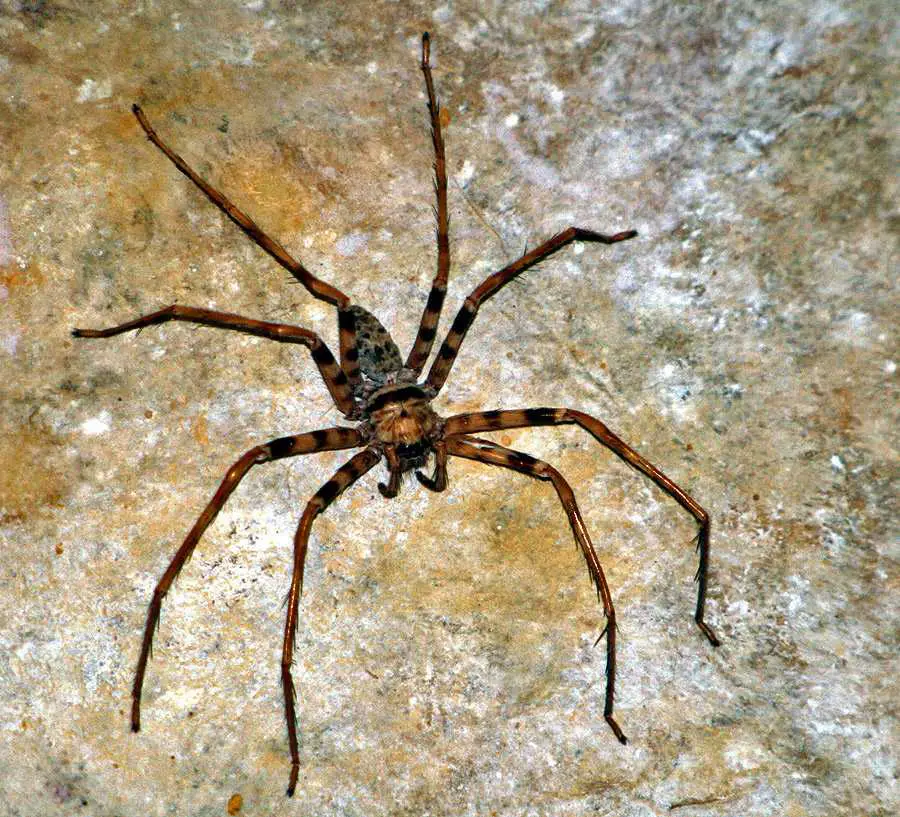
Khone Falls (Chutes de Khone)
Champassack
At 10783 meters, this is the widest waterfall in the world. The total height of the cascade is 21 meters.
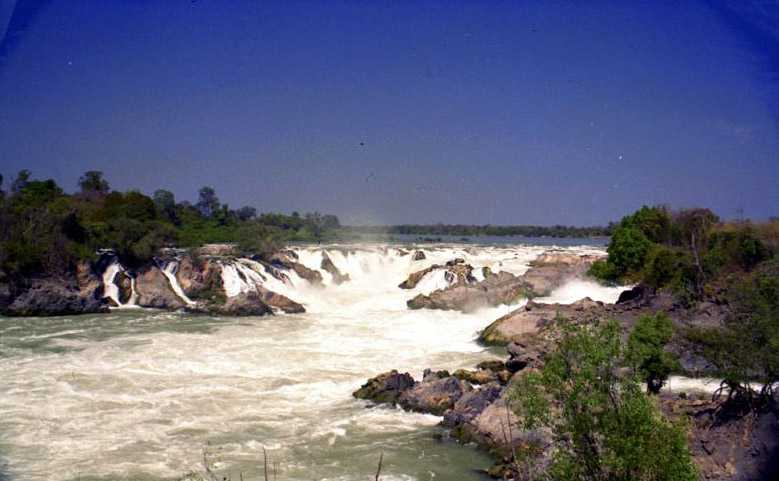
Kuang Si Falls (Kwangsi)
Luang Prabang
Waterfalls over tufa formations forming numerous blue pools. The total height of cascades is 60 – 50 m.
Khammouan dolines
Khammouane
Limestone mountains contain more than 350 collapse sinkholes, up to 230 million m³ large. Considered to be the largest concentration of large collapse dolines in the world. Many collapse sinkholes contain an unknown amount of endemic species, most are not explored. Some dolines are accessible only by air.
Khong Lor (Kong Lor, Konglor)
Khammouane
7.5 km long river passage in a cave – a giant tunnel that in some places is even 100 m high. The whole cave can be traveled in a boat. In one of the caves lives the giant huntsman spider (Heteropoda maxima) with a leg span that reaches 30 cm.
Tad Xe Falls (Tat Se, Tat Sae)
Luang Prabang
Exotic falls – the water there is flowing over numerous smaller tufa steps and numerous trees are growing right in the falls – thus creating the impression of a flooded forest.
Naga fireballs of Mekong
Vientiane Province
Unique phenomenon – glowing reddish balls rising from the water of the Mekong River and going upwards in the air. Local people even organize festivities at late nights in October to observe this weird sight. Sometimes there are seen thousands of such balls per night. It is possible that this is the combustion of gases emanating from the river sediments.
Tad Fane Falls (Taat Fang, Dong Hua Sao)
Champassack
Twin falls, approximately 120 m tall, falling in a deep canyon that resembles a sinkhole.
Chom Ong Cave
Odoumxay
More than 16.4 km long cave with enormous passages and beautiful speleothems – including travertine terraces. The cave goes through a mountain and thus has two entrances.
Nam Tok Katamtok falls (Tad Katam Tok)
Sekong
Beautiful, free-falling plunge, approximately 100 m high. Falls emerge from the dense jungle.
Nam Ou gorge at Muang Ngoy
Luang Prabang
Beautiful, narrow, forested gorge with up to 600 m high cliffs.
Tad Lo Falls
Salavan
Picturesque, comparatively low and wide falls falling over cliff steps.
Biological wonders
Ban Koma tea plantation
Phongsaly
Plantation with some of the oldest tea trees in the world, up to 400 years old. As these tea trees due to their age have reached deeper soil levels, tea has a specific aroma and taste.
Archaeological wonders
Plain of Jars
Xiangkhouang
More than 90 separate sites with unique megaliths – giant, 1 – 3 m high stone jars. On some sites are even 400 jars. These megaliths were created in 500 BC – 500 AD and used as human burial sites.
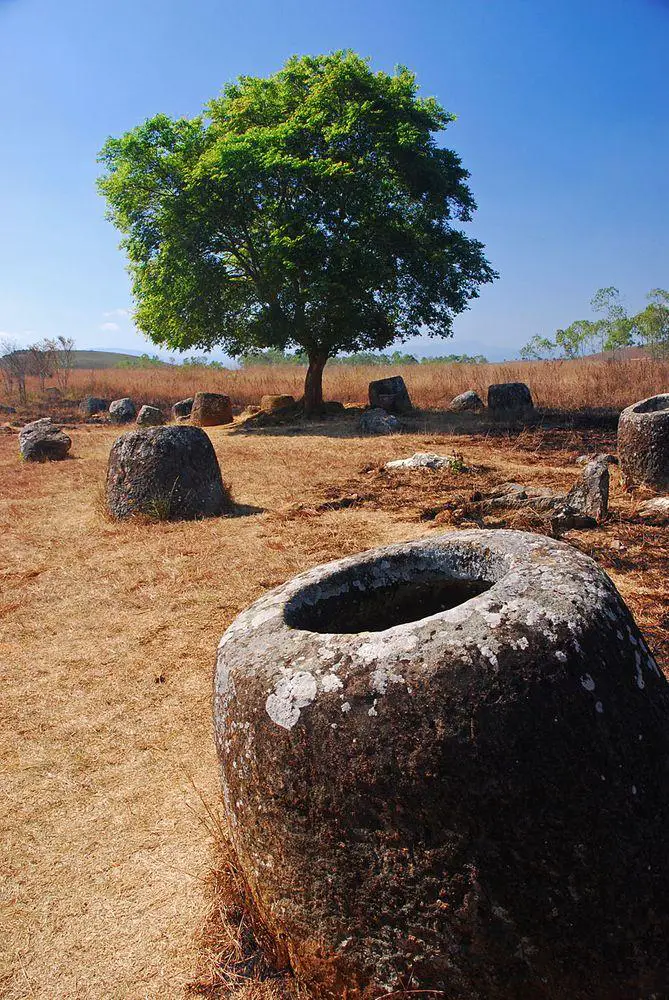
San Kong Phanh and other megalithic sites of Hintang Houamuang
Houaphan
Some 20 sites with numerous standing stones – menhirs – from 1000 – 500 BC. Menhirs here are made of long, narrow blades of schist and are erected over the burials excavated into the bedrock, often accessible by descending a chimney with rock-cut steps.
Pha Pa Cave (Pa Fa)
Khammouane
In 2004 in this previously unexplored cave have been found 229 ancient, more than 600 years old statues of Buddha. The entrance in the cave leads from the lower part (but not the base) of a 200 m high cliff.
Architecture wonders
Luang Prabang
Luang Prabang
The former capital of Laos until 1946. This city contains numerous beautiful temples, monasteries, and urban houses and represents a unique mix of Laotian, French, and Vietnamese architecture, planning, and art. Inhabited since the 7th century AD or earlier.
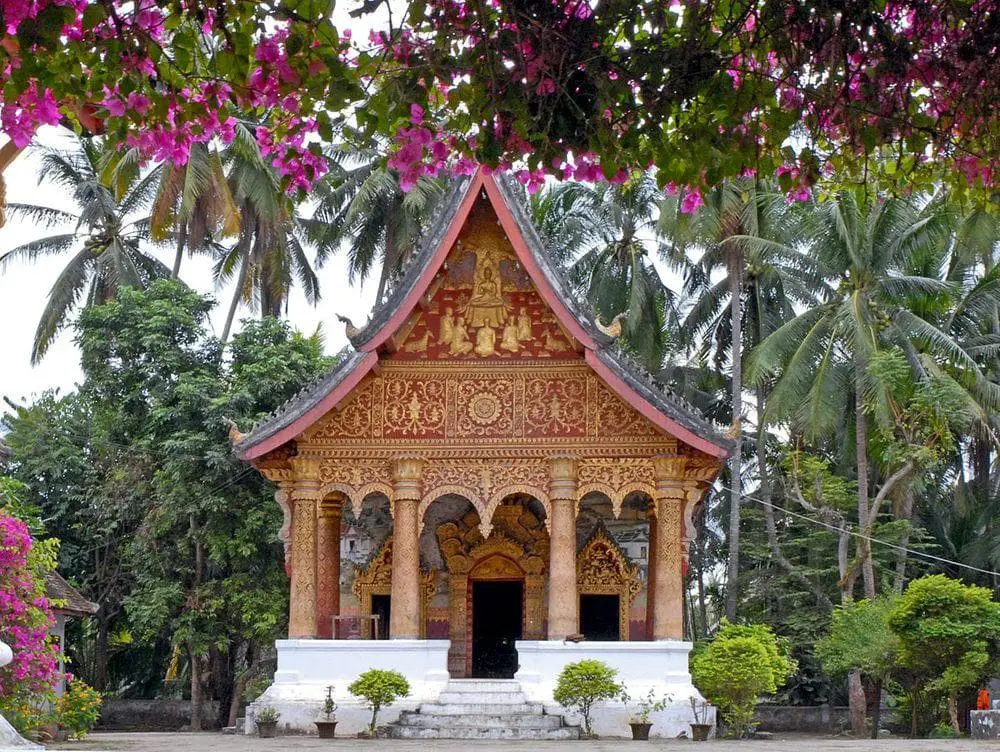
Pak Ou Caves
Luang Prabang
Two caves – Tham Ting and Tham Theung overlooking the Mekong River, accessible only by boat. Both caves serve as pilgrimage sites and contain some 4,000 sculptures of Buddhas, for the most part, made of wood, often covered with gold.
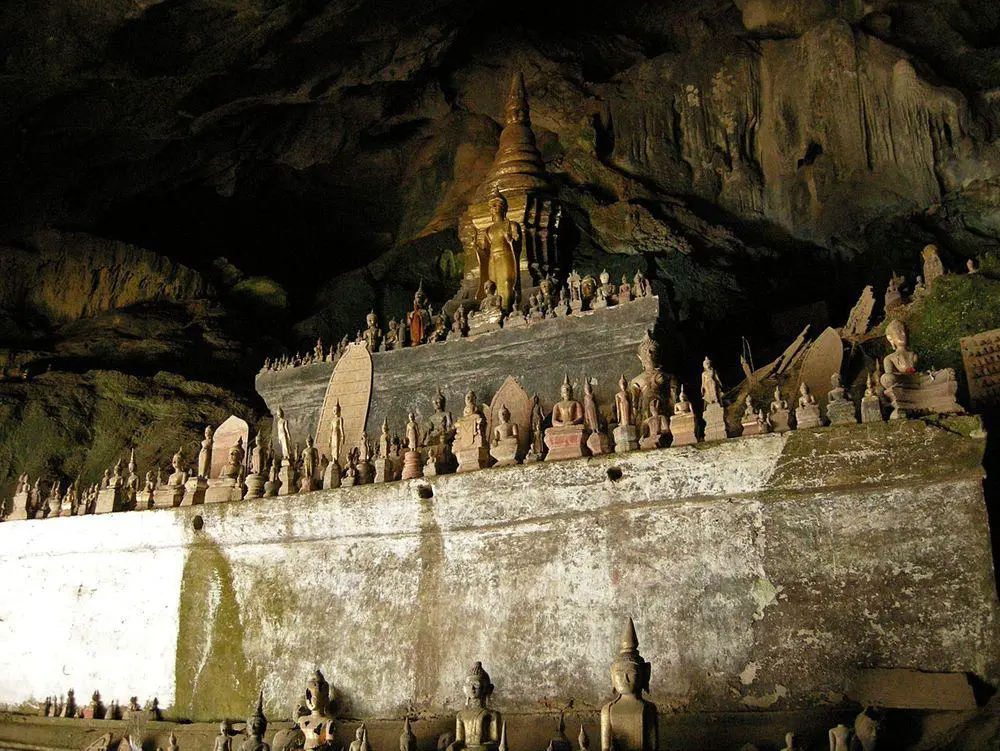
Phra That Luang (Pha That Luang)
Vientiane Capital
The most important Buddhist monument in Laos – a stupa that is built on sacred land where already in the 3rd century was built Hinduist temple. Later, in the 11th – 13th century here was built Khmer temple which most likely was not existing in the 16th century when the current Buddhist stupa was built. The architecture of the structure has high symbolism to Lao people and in many ways symbolizes Khmer culture. The structure is covered with gold, 45 m tall.
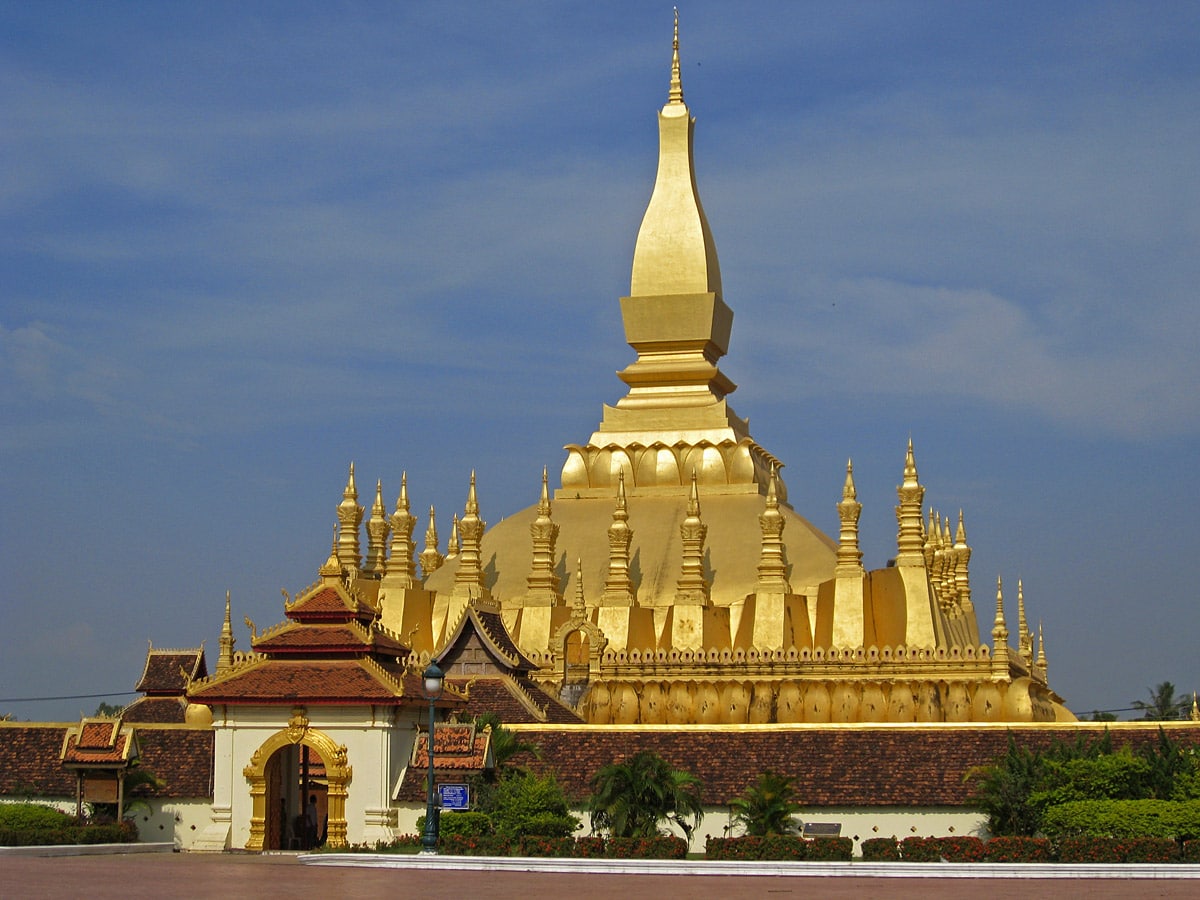
Viengxay Caves
Houaphanv
Group of some 480 limestone caves that served as a shelter for up to 23,000 people including communist leaders during the bombardment in the 1960ies – 1970ies. This area has high scenic beauty.
Vat Phou (Wat Phu, Wat Pho)
Champasak
Khmer Hinduist temple complex from the 11th – 13th century AD, converted to a Buddhist temple around the 15th century. Temples have been built here since the 5th century AD and are located on a steep hill that has a natural cliff – a representation of lingam – on its top. A complex of beautiful buildings – two palaces, a temple, a sanctuary, and a library, as well as different stone carvings.
Wat Xieng Thong
Luang Prabang
An important and beautiful temple complex, it was built in 1560.
That Sikhottabong
Khammouane
One of the most sacred sites in Laos. It contains a 28.9 m tall stupa that was built in 1568.
Sayfong Temple city
Vientiane Capital
In the southern part of contemporary Vientiane once were located at least 300 Buddhist temples developed since the 11th century AD and retained importance until the 16th century.
That Ing Hang Stupa
Savannakhet
This beautiful stupa was built in the 16th century.
 Recommended books
Recommended books
DK Eyewitness Travel Guide: Cambodia & Laos
Whether you want to explore the temples of Angkor Wat, take a boat trip through the famous Tham Kong Lo caves, or sunbathe on stunning white beaches in southern Cambodia, Cambodia and Laos offer exhilarating options for visitors.
The Rough Guide to Laos
Discover Laos with the most incisive and entertaining guidebook on the market. Rough Guides’ expert authors have done all the hard work for you: seeking out the best guesthouses, sampling sizzling street food, and trekking to remote hill villages, then writing it all up with our trademark blend of humor, insight, and practical advice. Whether you plan to lounge on laidback islands in the Mekong River, explore ancient Khmer temples or tour the Bolaven Plateau’s coffee plantations, this new edition of The Rough Guide to Laos will show you ideal places to sleep, eat, drink and shop along the way, with options to suit every budget.

